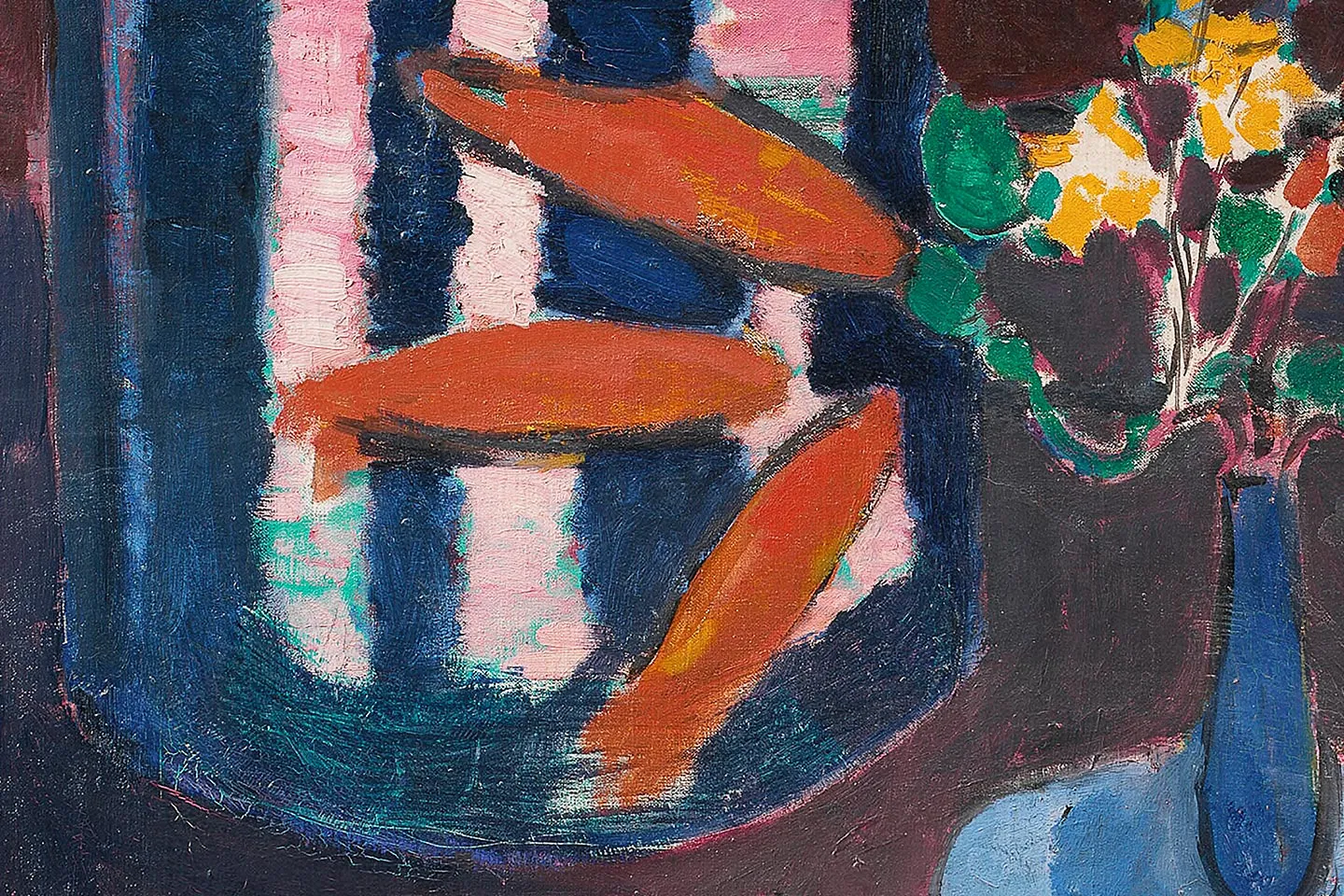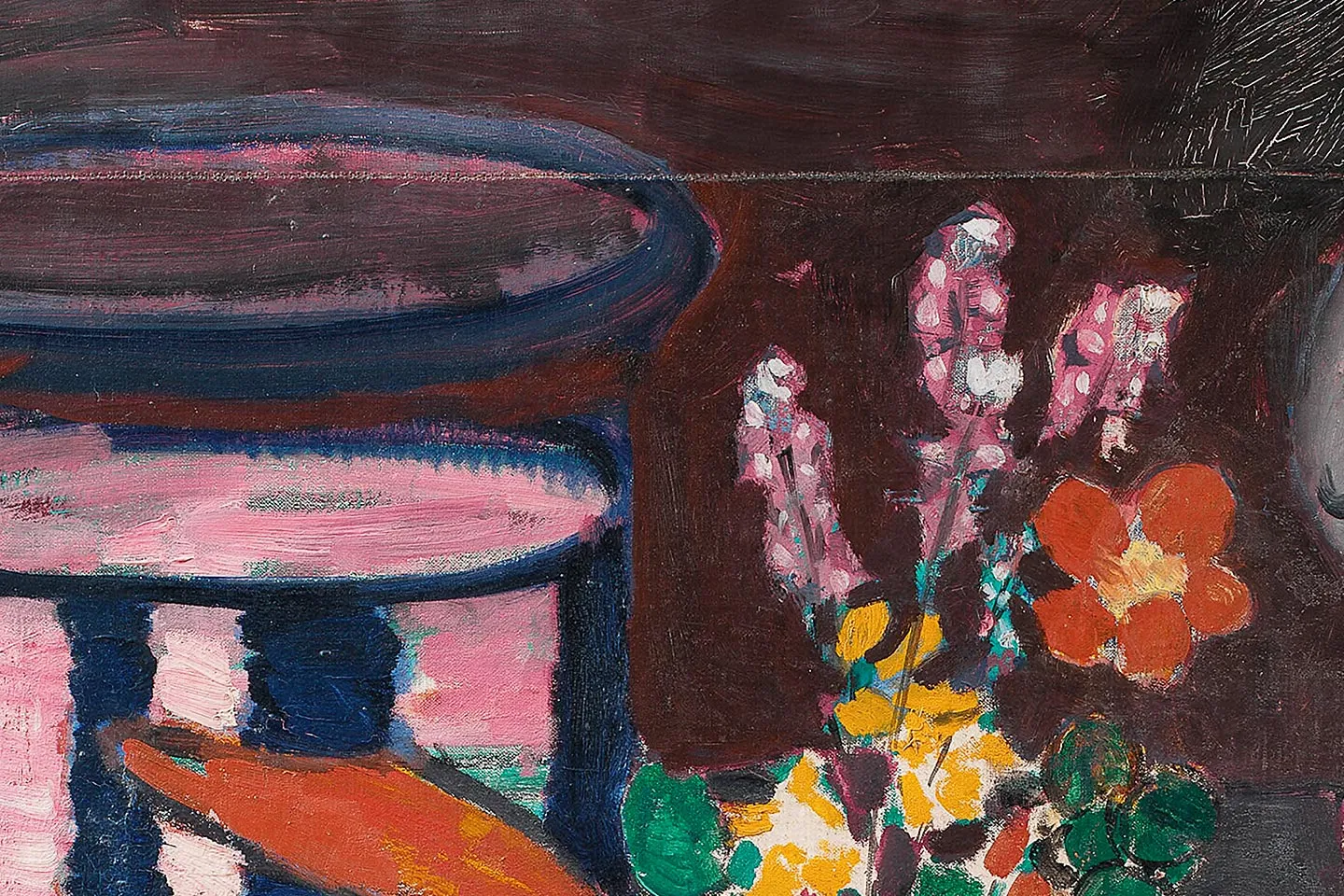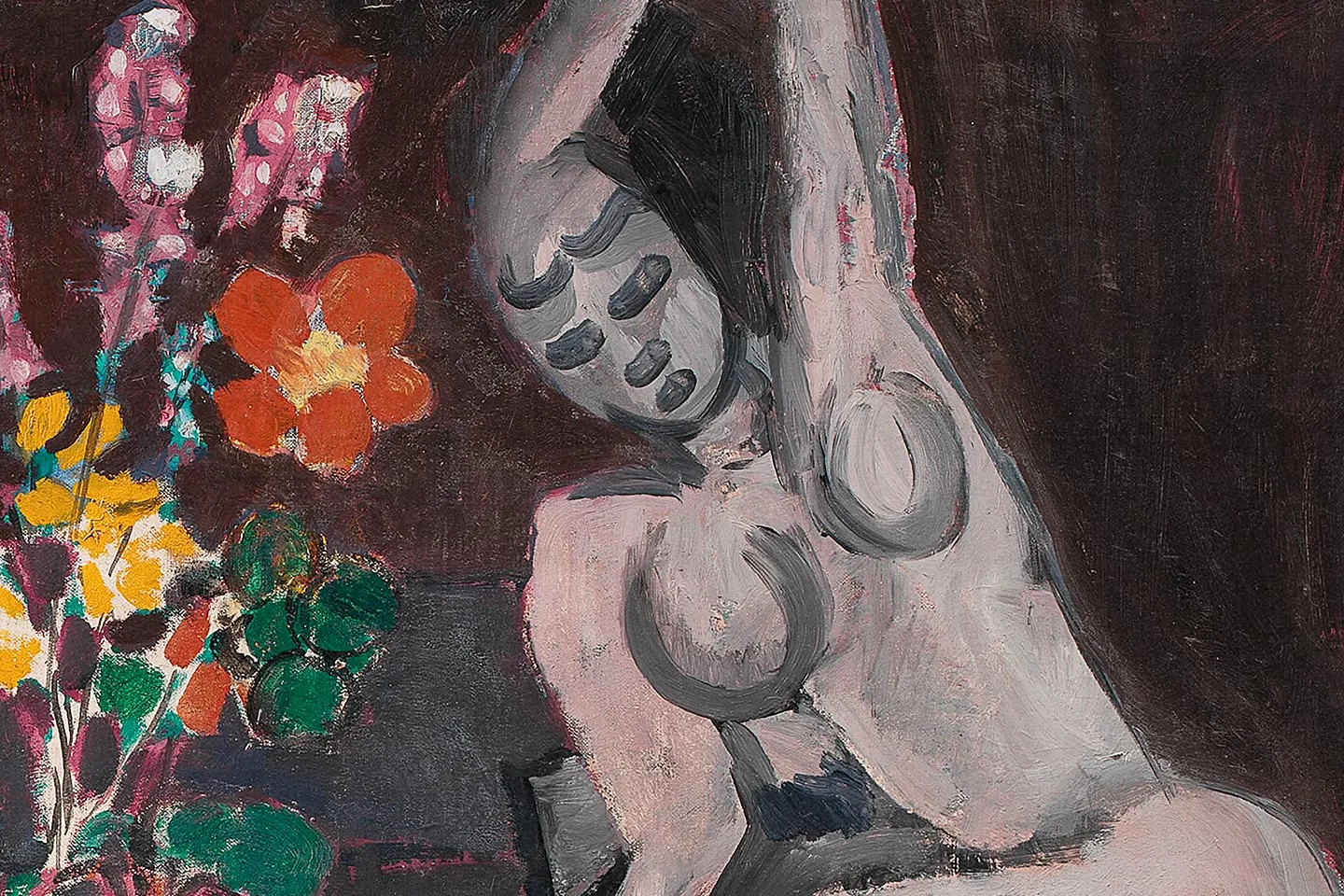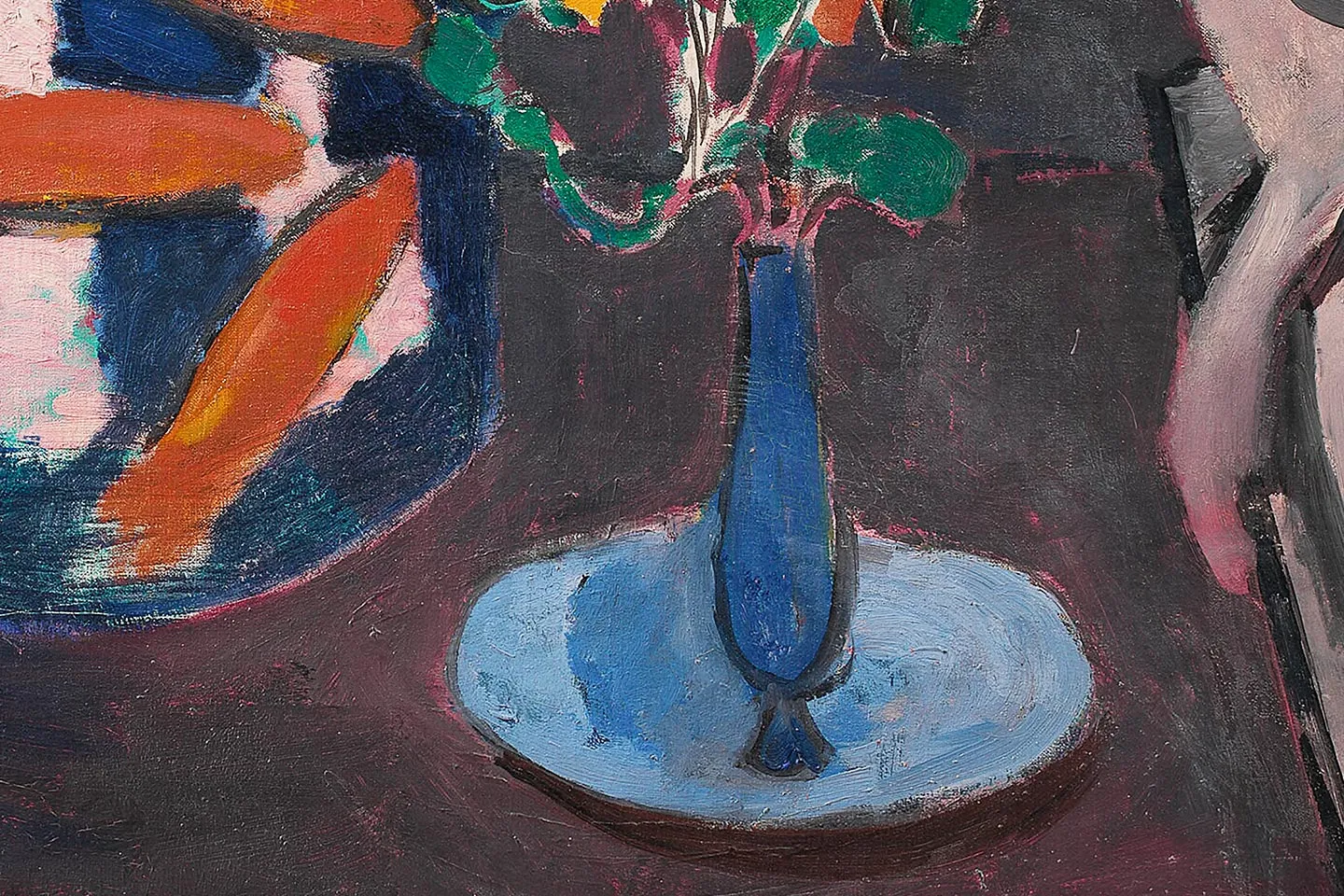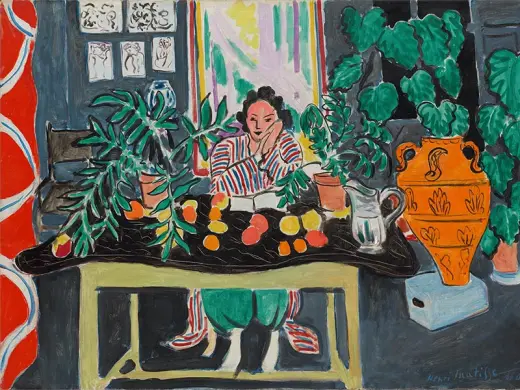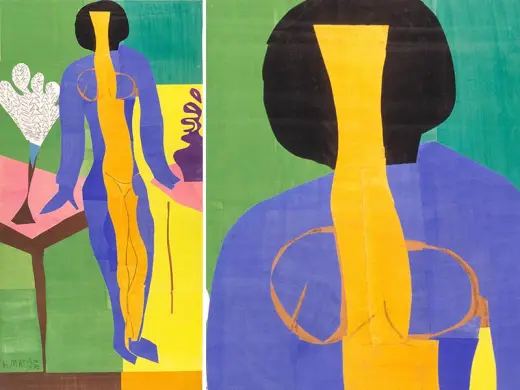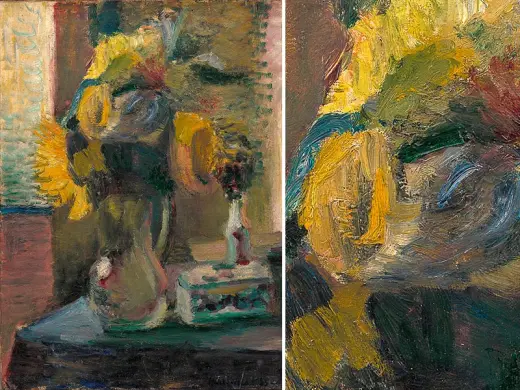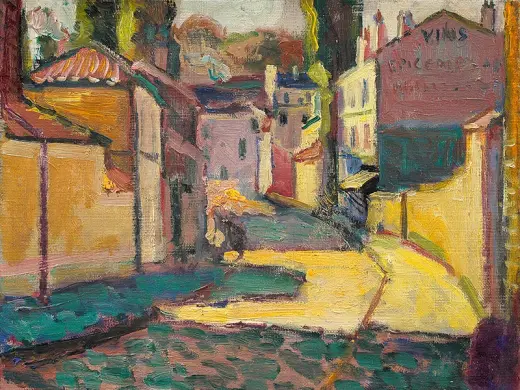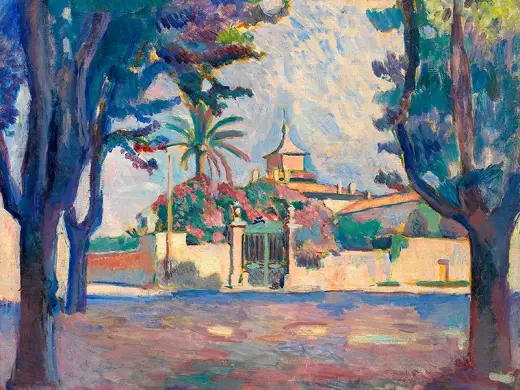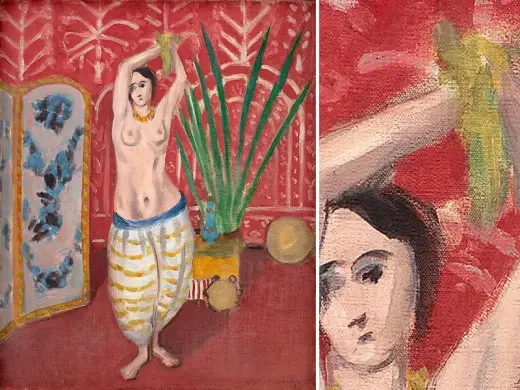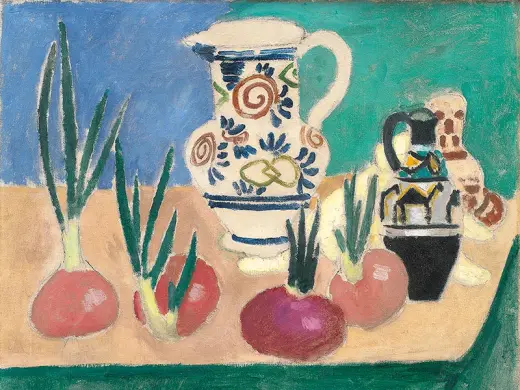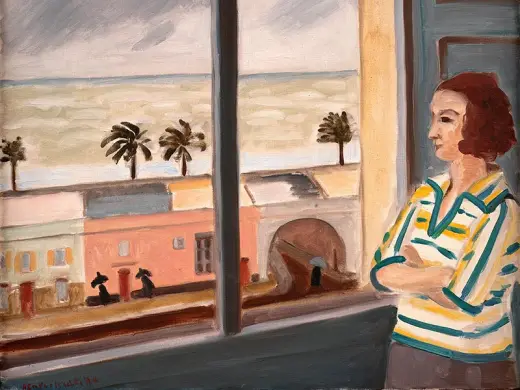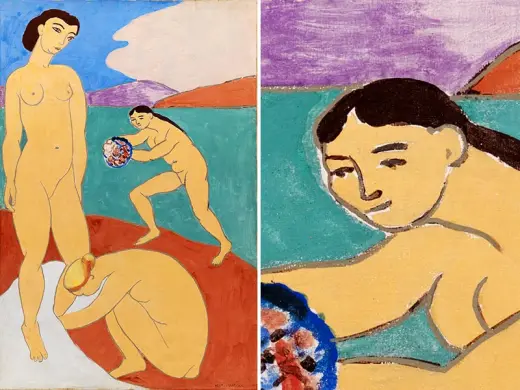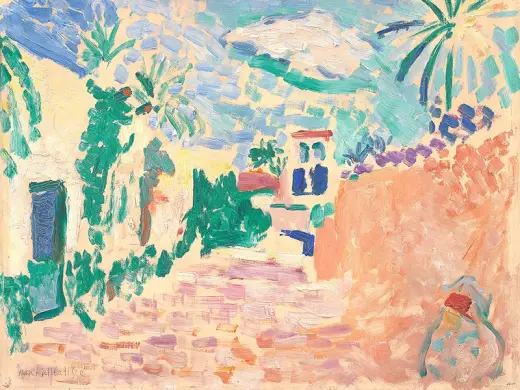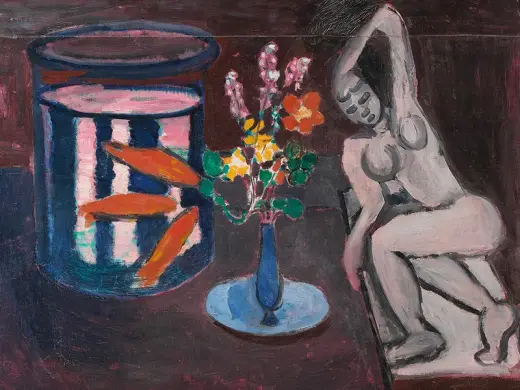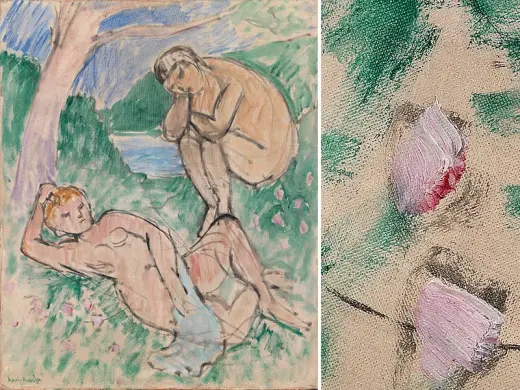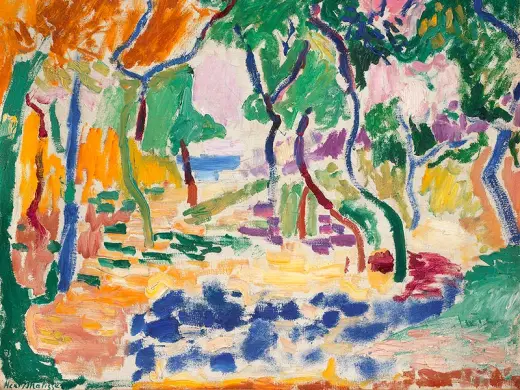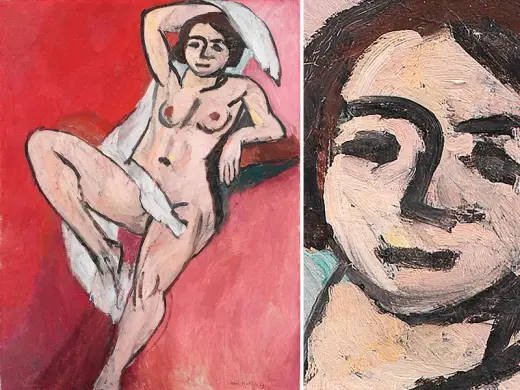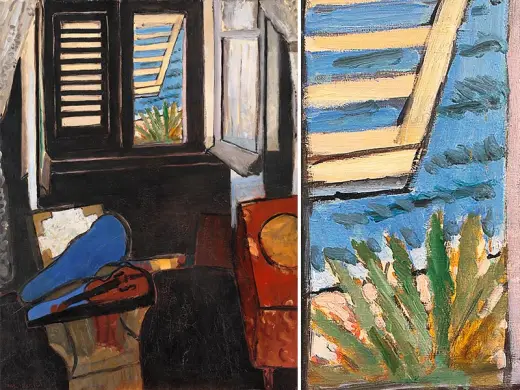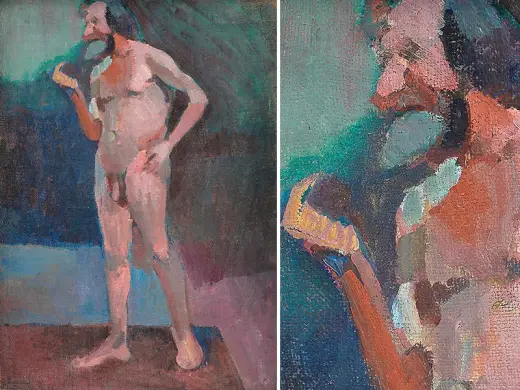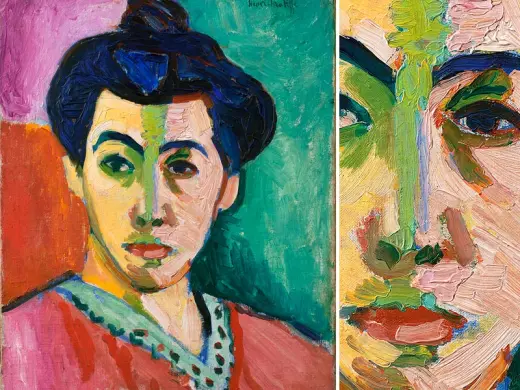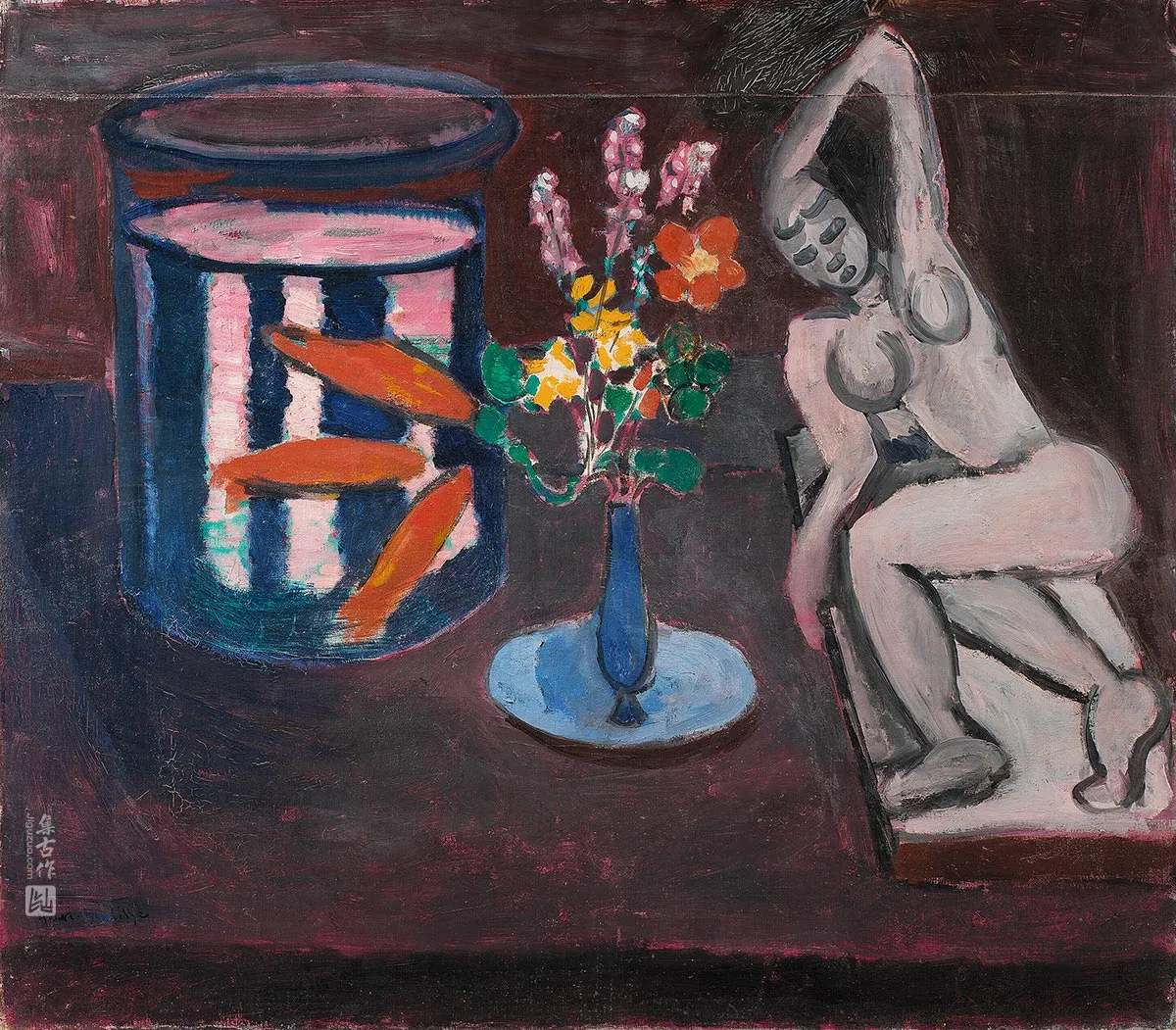
高清大图局部细节 / DETAILS
Goldfish have been part of European culture since the 17th century. Originally bred around 1,000 years before in China, the fish were used for decoration and as a luxury commodity. In the 19th century they were particularly popular in middle-class homes. In this painting they have been reduced to their most distinctive feature: a strong orange colour. Like three arrows they point towards the edge of the glass and the statuette of a reclining, naked woman. The work is composed out of smouldering colours, and has a melancholy and perhaps wistful air. Matisse's painting is always very much about how colours create moods. Presumably the goldfish have no allegorical significance that requires previous knowledge. Rather, they act here as symbols of something unattainable. The art historian Jack Flam has read the work as a story about a broken relationship and Matisse's yearning for love lost.
金鱼自17世纪以来便成为欧洲文化的一部分。这种鱼最初约在一千年前的中国被培育出来,用于装饰和作为奢侈品。19世纪时,它们在中产阶级家庭中尤为流行。在这幅画中,金鱼被简化为它们最显著的特征:鲜艳的橙色。它们像三支箭一样指向玻璃缸的边缘和一个斜倚的裸女小雕像。这幅作品由炽热的色彩构成,带有一种忧郁甚至可能是惆怅的氛围。马蒂斯的绘画总是非常注重色彩如何营造情绪。金鱼在这里可能并不具有需要特定知识才能理解的寓意,而是象征着某种难以企及的事物。艺术史学家杰克·弗拉姆将这幅作品解读为一个关于破裂关系的故事,以及马蒂斯对逝去爱情的渴望。
